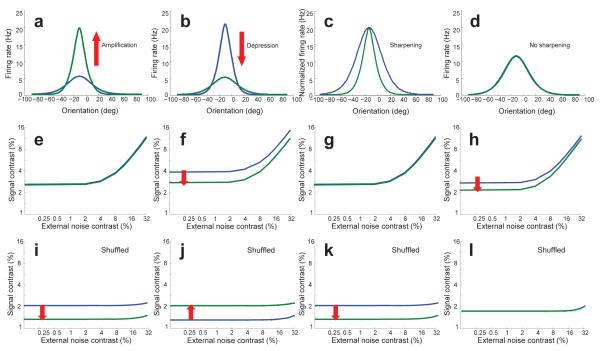Figure 4.
Taking correlations into account demonstrates that amplification and sharpening are neither necessary nor sufficient for learning. (a,e,i) A demonstration that amplification is not sufficient for learning. Parameters in this network have been changed in a manner that led to amplification of the orientation tuning curves (a). At the level of TVC curves, the same change led to no improvement in performance – the TVC curve did not shift (e) – thereby showing that amplification is not sufficient for learning. Interestingly, single cell recordings in such a network would incorrectly conclude that learning did take place as illustrated by the drop of the TVC curve when computed with Ishuffled (see main text) (i). (b,f,j) Amplification is not necessary for learning. Learning can take place in a network (f) in which the gain of the tuning curve decreased during learning (b). (c,g,k) Sharpening is not sufficient for learning. This network shows no sign of learning (g) despite very significant sharpening of the tuning curves (c). (d,h,l) Sharpening is not necessary for learning. Learning can take place (h) even in the absence of any sharpening (d). All TVC curves were obtained for the 89% correct performance criterion.

